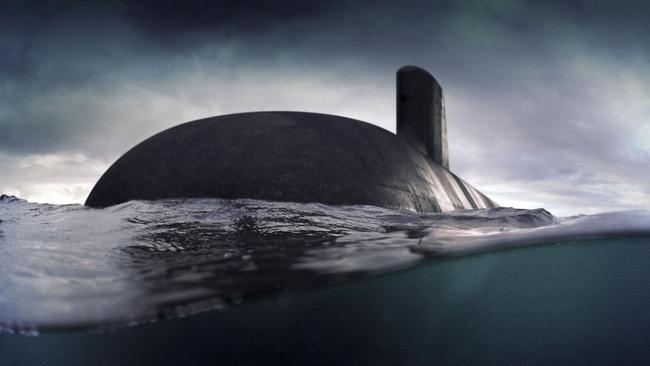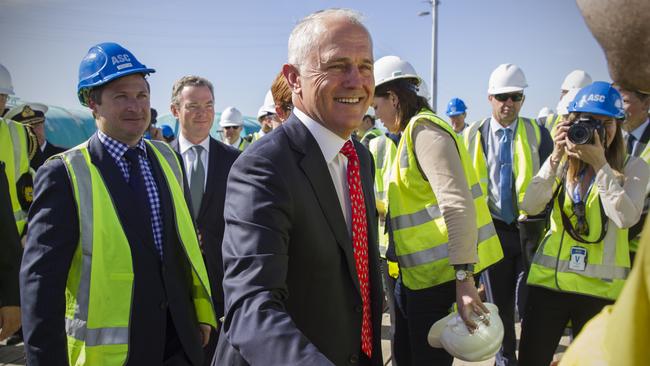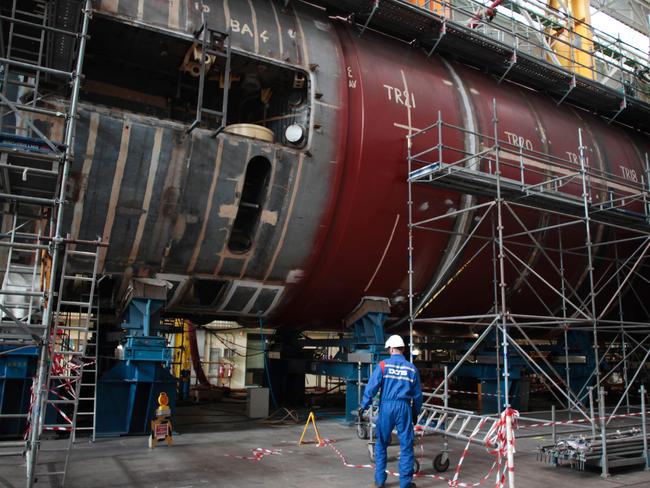Sub standard: why the $2,000 we are each spending on submarines will probably be a terrible waste.
IT’S the biggest defence project in our country’s history but at a cost of $2000 per Aussie, there are some serious issues to be considered.

AUSTRALIA is spending $50 billion to buy submarines. The biggest whack of money we’ve ever spent on a Defence project. It comes out at $2000 per person. And it’s probably a shocking idea.
1. STRATEGY
The strategic rationale for submarines is that an island needs trade lanes to stay open. Yep, we do. But the kind of war where a country lays siege to another whole country — think German U-Boats blockading Britain — is no longer likely at all.
Given our enormous coastline and many ports, very few countries could prevent trade to Australia. Maybe China or America, (both have around 70 submarines). If we’re at war with one of them our dozen subs won’t make a lick of difference.
Anyway, a global conflict is unlike to feature anyone falling victim to a U-boat and drowning in the North Sea. Such a war is likely to be over before that’s possible, thanks to nuclear weapons. (Only a few countries with a serious submarine fleet lack nukes.)
Our non-nuclear submarines would have been handy in the past. And the generals are always “fighting the last war” strategically. Which is fine. But it would be better if we didn’t have to give them $2000 to do so.

2. AVAILABILITY
We are buying 12 boats. Except — here’s the thing — you can’t use them all at once.
Subs need a lot of maintenance. Take the Collins Class submarines, of which we have six. Best-case scenario — if things are going splendidly — is they spend half the time in the water, half in maintenance. But those subs have big problems. Some recent years we’ve managed to have basically just one in the water on average.
So with our very expensive new fleet, realistically you could end up with just five or six boats in the water at any time. All of a sudden the strategic value looks even dimmer.
3. COST BLOWOUTS
The Joint Strike Fighter aircraft program, which we bought into, is now many billions of dollars over Budget. Possibly hundreds of billions (reports vary). And it is hardly alone.
We consistently underestimate how complex defence equipment is because we, naturally, compare it to a vehicle. But not only is our new submarine custom-made (unlike my station wagon) it is also cutting edge technology.
It has to do many things perfectly. A submarine is a fortress, an IT hub, a weapons system, a vehicle and a temporary home all in one. Making all the things fit in together is hard. (Recently Spanish submarine builders had to send their sub back to the drawing board after they accidentally made it 75 tons too heavy and it was going to sink.)
When you face the inevitable problems you can either compromise or just spend that bit more to make it work. And if you cut corners on Defence equipment, you risk losing personnel and very expensive equipment… So of course you spend a bit more. And that’s how such laughably enormous cost blowouts happen.


4. BUT WAIT THERE’S MORE
So we spend $2,000 each. That just gets us the big lumps of steel. If you actually want to use them, you’re paying more. It could be another $2,000 to $4,000 per Australian over the next 45 years. All that maintenance is expensive. And so are the crews.
The Navy has had enormous problems actually finding and training crew for submarines. A cook on a submarine can be paid an amazing $200,000 per year. Other personnel get more. Living in a big steel tube for 80 days with only other men for company is rubbish, apparently.
5. ENOUGH IS ENOUGH!
Australia is the 52nd biggest country in the world by population, 13th by size of economy, and sixth by land area. We spend 13th most on defence. And we are ramping up by $26 billion per year over the next 10 years.
It is a lot, given we have no land borders, the natural advantage of being surrounded by a giant moat, and are strategically not on the way to anywhere much (sorry NZ).
The main reason anyone would attack us is in the context of a global or regional conflict is we have a large military they might fear.
Our spending has an effect on our neighbours. Indonesia is not a rich country, but they have indicated they are also thinking about expanding their submarine fleet. Would limiting our spending help forestall a local arms race?
OPTIONS
The great thing about the way the acquisition will work is there should be the opportunity to cut back from 12 when the inevitable delays and cost blowouts happen. From here we can’t save the whole $2000 but maybe we can save some, for better uses.





